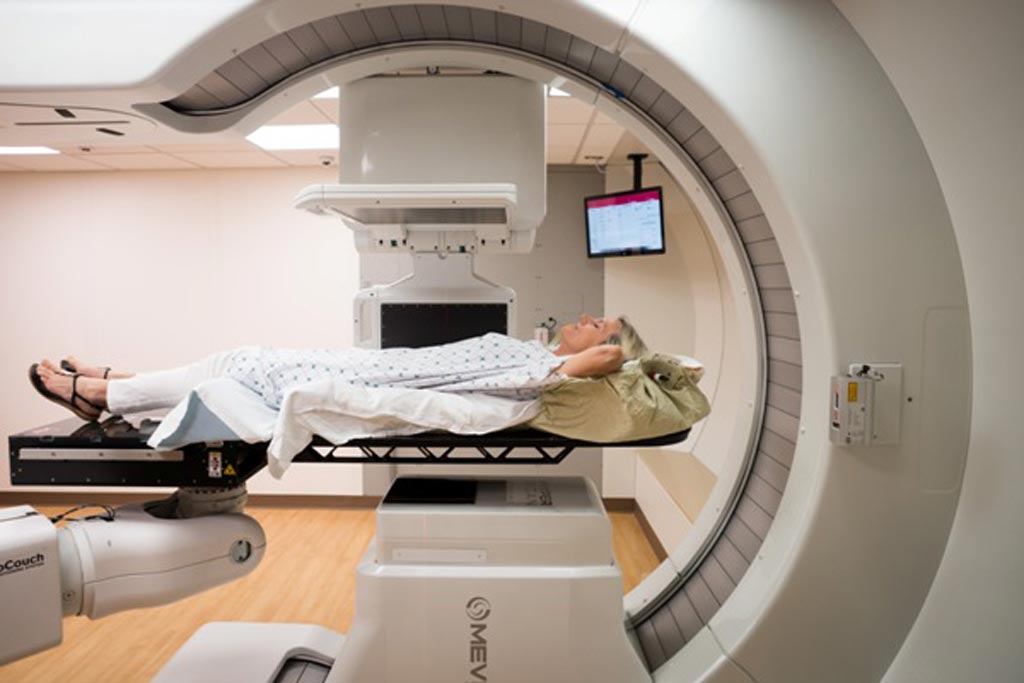Hyperscan Proton Therapy System Offers Pinpoint Accuracy
By MedImaging International staff writers
Posted on 14 May 2018
An innovative Proton Therapy System improves on existing scanning capabilities and enables clinicians to deliver conformal fields faster and with more precision than in the past.Posted on 14 May 2018
The Mevion Medical Systems (Mevion; Littleton, MA, USA) S250i Proton Therapy System with Hyperscan pencil beam scanning (PBS) shapes the delivered radiation dose by precisely targeting tumors with sub-atomic particles. To improve accuracy and speed, a robotically controlled adaptive aperture proton multi-leaf collimator (pMLC) is used, which trims the edges of the beam to achieve sharp lateral dose gradients. This capability can deliver up to a three times sharper drop off in radiation at the delivery field edge, sparing healthy tissue and limiting unnecessary radiation to sensitive locations.

Image: The S250i proton therapy system with Hyperscan PBS (Photo courtesy of Mevion Medial Systems/MedStar Georgetown).
By reducing delivery times to less than five seconds, errors resulting from target tumor shifting under normal organ motion, such as breathing, can be reduced. Other features of the S250i include a gantry mounted superconducting synchrocyclotron, a six degree-of-freedom treatment couch, and advanced in-room image guidance that creates a three-dimensional (3D) representation of the tumor and relays the information to the proton therapy device. The computerized tomography (CT) based imager can also be used to modify treatment in response to changes in the patient’s anatomy, such as tumor shrinkage.
“Proton therapy is an advanced form of radiation that can destroy cancer cells. A machine called a cyclotron speeds up protons to two thirds the speed of light and they become highly charged,” said radiation oncologist Peter Ahn, MD, of MedStar Georgetown (Washington DC, USA), which inaugurated the first system worldwide in April 2018. “Because we can more tightly control the protons than we are able with traditional radiation, proton therapy can be given without damaging critical tissues and structures near the tumor because the beam conforms precisely to the tumor’s size and shape.”
“Delivering sharp field edges has been a real challenge for PBS, especially in shallow fields. In intracranial procedures, where critical structures are in close proximity to tumors at shallow depths, having the sharpest lateral penumbra is essential,” said Skip Rosenthal, VP of clinical education at Mevion. “The sharp penumbras of the adaptive aperture system have substantial benefits for these patients. In addition, the enhanced speed of Hyperscan PBS could enable greater confidence in treating thoracic tumors.”
Proton therapy is a precise form of radiotherapy (RT) that uses charged particles instead of x-rays. It can be a more effective form of treatment than conventional RT as it directs the beam more precisely, with minimal damage to surrounding tissue. Evidence is growing that protons can be effective in treating a number of cancers, in particular children and young people with brain tumors, for whom it appears to produce fewer side effects such as secondary cancers, growth deformity, hearing loss, and learning difficulties.
Related Links:
Mevion Medical Systems













